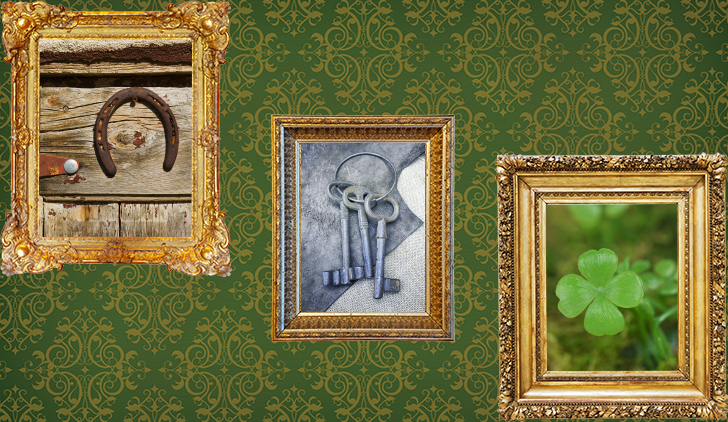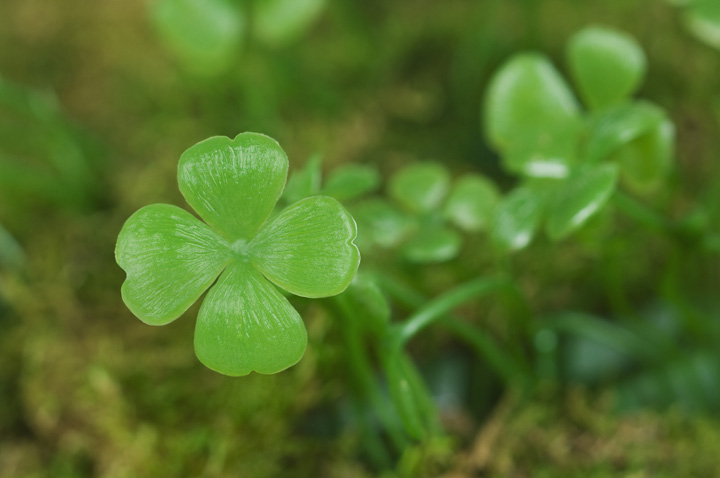
The Irish aren’t the only lucky ones! Cultures around the world have symbols, charms and traditions meant to bring good luck or ward off bad luck. Here are just a few of the more common symbols, and some of them are lucky in more than one country.
Crickets

In some Asian and Native American cultures, crickets are considered good luck and protectors of the home. The reason? When danger is near, crickets stop chirping, so the humans in the house know something is wrong. But watch out! If you kill a cricket — even by accident — it’s very bad luck.
Elephants

With their long lives, strength and intelligence, elephants have become a symbol of good luck across most of the world but especially in India, home of the elephant-headed god Ganesh. Businesses and homeowners often place statues of two elephants facing each other near their front door to bring success. Some people believe the elephant’s trunk should be up to rain luck on everyone who walks past, while others believe the trunk should be down to allow luck to flow across everyone’s path.
Four-leaf clover

The lore of this plant runs deep in Irish tradition, and it’s one of the most common symbols for luck in the Western world. The four leaves are said to represent hope, faith, love and luck. Clover normally has three leaves, and the chance of finding one with four leaves is about 1 in 10,000. With those odds, it’s no wonder why many believe finding a four-leaf clover is good luck!
Horseshoes

A horseshoe hung over the door of a house is supposed to bring good luck and protection to the home. The folklore surrounding horseshoes traces back to ancient Egypt, but there’s disagreement on how it should be hung. Most people believe the horseshoe should look like a “U” to trap good luck, but others think it should be hung with the opening down to pour luck on those who walk under it.
Keys

With their ability to unlock areas that were once closed, keys are a symbol of luck to many cultures. In Japan, three keys tied together are thought to bring love, health and wealth. In eastern Europe, some people hang an upside-down key over their bed to make sure they sleep well. In early Jewish traditions, a pregnant woman would be given a synagogue key to hold while giving birth to ensure a safe delivery.
Ladybugs

If a ladybug lands on you, it may mean luck is coming your way! And it all has to do with the number of spots on its back. While some people say the number of spots represents how many months you will have good luck, others believe it is how long it will take before your wish comes true. And if it lands on a newly married woman, the spots may tell her the number of children she will have. They’re also considered very good luck for babies, which is why a lot of infant clothes feature ladybug images.
Pigs

In some northern European cultures, calling someone a lucky pig is a good thing! Since pig farmers always had food for their families, the pig became a symbol of wealth and prosperity. During December and around the beginning of a new year, cards, decorations and candies feature images of pigs. In China, pig charms are thought to bring good luck to businesses. With all those ties to wealth and money, keeping your savings in a pig-shaped bank seems like a good idea.
Rabbit’s foot

As a good luck charm, carrying around the hind foot of a rabbit sounds a little — shall we say — gross. But this North American superstition really took hold in popular culture. Because rabbits have lots of babies, the charm is supposed to help people who want to have children. Gamblers also stow one in their pocket to increase their odds of winning.
Keeping bad luck away
Not all lucky symbols and charms are meant to bring good luck — some are supposed to protect the wearer from the evil eye. From Asia and Africa to Europe and Latin America, many cultures around the world believe bad luck can be caused by a mean-spirited stare from another person. Many protective charms either feature a hand, an eye or both.
In the Middle East and Israel, Hamsa Hands — also called the Hand of Fatima — are shaped like a hand with an eye in the palm. Likewise, in the Mediterranean, eastern Europe and the Middle East, you can find glass nazars — charms that look like blue eyes. In some Latin American cultures, infants are thought to be at most danger from the evil eye, so they are given bracelets with eye-like beads.


